DAC Online Exhibition 2015: Enhanced Vision – Digital Video

Chair(s):
- Kathy Rae Huffman
-
- Independent Media Art Curator
Art Show Administrator(s):
- Cynthia Beth Rubin
-
- Rhode Island School of Design
- C B Rubin Studio
Dates:
July 2015
Art Show Overview:
The first online video exhibition presented by the ACM SIGGRAPH Digital Arts Community, Enhanced Vision – Digital Video surveys a wide variety of ways video artists currently explore socially important issues using digital methods to enhance their practice. Video Art has experienced a long and celebrated history that has evolved technically alongside the development of the personal computer as well as concurrently with critical changes in social, political and cultural events. What began as an experimental analog technology, allowing real-time recording and viewing using physical material (tape) to record on, has transitioned into a completely digital format, from the first recorded images to the end result. Today, video and computer/digital technology have merged seamlessly: what once was considered pure video art and what was once simply known as “computer graphics” are now often combined. The significance of this realization was the basis for this online exhibition.
Since the early 1970s, when the first video artists used reel-to-reel Sony Portapaks to witness and distribute content, especially that which was not shown on TV (i.e.: not obvious to the general population at the time), content was key to the practice of video art. Analog technology allowed for some “video effects,” but these were limited and were often abstractions of the recorded material. When, in the early 1980s, digital video technology first became publicly available, many artists began to incorporate new digital effects in order to emphasize content. The works they created were both subtle and extravagant but divergent from earlier video because their results were not always based on what could be seen through their camera lens. The personal computer also became available to early adopters (including many artists) around the same time, but computer graphics (especially animation) and video art were quite distinct skills and technologies to master, and few artists claimed proficiency in both fields of practice. Slowly over the years, as digital technology has become the standard for video editing, graphic software and specialized hardware have also become areas of interest to video artists.
The “digital age” became widely recognized in the mid-90s, when Internet access exploded and became free for many, especially those artists who were active in new media arts at university programs and at subsidized media centers in Europe. Soon, communities of artists gathered around artist servers who supplied not only access, but training, new technology and an interested audience at media art festivals, and in special events which could be live, in real-time, and online. This paradigm shift changed the game for all artists working in media, but especially video artists. All of a sudden, their works theoretically could be widely presented online, without curatorial or institutional intervention, and the association with other artists working online in performance, sound, and interactivity, joined up thinking in many projects. But the reality was often disappointing, server space was limited, or bandwidth was too narrow for easy viewing. YouTube and other online portals have increased the audience for video material and rapidly built a new aesthetic of fast paced material. This resource remains a huge treasure of cultural diversity and even supports serialized programs made especially for the online audience. Video artists are included in this online and often chaotic digital world of multiplicity. It is only with organized topics, programs created by specialized groups, curated exhibitions, and online events that the best and most interesting work can be viewed with some reliability.
This very brief and over-simplified history, even if made longer and more detailed, still wouldn’t explain the longstanding disconnection that somehow continues to exist between artists who embrace the technical effects possible with video, artists who understand and master computer software, and traditional video artists who use the tools but reject any connection to technology. But, as the technology becomes more and more invisible in the video process, this certainly will become less of an ideological issue. Content is still considered the priority of video art, and a proficiency to develop ideas using digital programs, secondary. Looking at how video aesthetics and digital technology meet to bring a new understanding to content is the priority of Enhanced Vision – Digital Video. Selected from an open call, this international survey features 30 of today’s most exciting and innovative digitally-enhanced video artworks, confirming that digital tools and content can co-exist and grow intertwined aesthetically and visually.
Enhanced Vision – Digital Video focuses on showing the manner in which digital methodologies enhance the moving image, and how these effects can reveal specific meaning and content that would not be revealed otherwise. Each selected work brings its own unique and original artistic style to expose socially significant issues. These works may use open source, individually coded, proprietary and commercial software, off-the-shelf graphic programs, giving artists the capability to reveal what a camera alone cannot capture. Thus, the unique aspects of video as a time-based art form, when combined with digital effects and computer graphics are capable of expanding the understanding of critical issues. The resulting “enhanced vision” reveals inventive ways of conveying significant, socially relevant ideas to online audiences. The ability of contemporary video to integrate effects and content utilizing digital components adds a deeper level of understanding to the literal meaning of the work. The criteria used to evaluate the work included in Enhanced Vision – Digital Video were as follows:
It reveals a normally “invisible” aspect of the visual scene.
It creates a metaphoric interpretation from the natural world.
It is a visual interpretation of a socially engaged or politically charged event.
It observes that which is an otherwise obscured scene.The works in the Enhanced Vision – Digital Video exhibition, in many cases, use found footage and off-air material, or snippets of downloads from the Internet, especially those from YouTube and other popular websites. These have all been reviewed and are considered to be fair use. Many are examples of the practice of mash-up, bringing together various sources, especially those found online, to form a new mix with a totally different, enhanced message. An online exhibition of video art would naturally attract artists who already use the Internet as a resource, and the resulting works confirm this. Extreme examples of mash-up in Enhanced Vision – Digital Video can be recognized in the work of Natalie Bookchin’s My Meds, from the series Testament, a YouTube collage of testimonials from people taking medications prescribed to them by their doctors, as well as Charlotte Eifler’s fast-paced OU TOPOS, which gives the impression of being a utopian construction from footage as found on the Internet. Likewise, Chonga Lee’s Raw Quinoa maps the collective imagination of networked culture through various demo videos and architectural visualizations.
The built environment is a major issue explored by Enhanced Vision artists. Observational works, such as Myriam Thyes work APOTHEOSIS OF GLASGOW HIGH-RISES reveal the overpowering growth of high-rise buildings, from a very unusual viewpoint (originally intended to be a projection on the ceiling); in Soft Pong Inari, Michael Lyons’ crowd-sourced photographs reveal a unique view of the Fushimi Inari Shrine; Nina Yankowitz creates an animation that uses a generic glass house as a metaphor for environmental and social decay in her work Shatter/Flood/Mud/Houses; the video City.Flow(), by Wobbe F. Konig, is an optical real-time journey through the urban environment; and Benjamin Forster, in A Written Perspective, takes his viewer through the Joondalup Shopping City using a text detection algorithm, giving a new view to the urban landscape.
The political environment presents a variety of visual topics to artists using video and digital effects to examine natural as well as man-made disasters. Kenji Kojima looks at the nuclear contamination of the ocean and soil in Composition Fukushima 2011, and creates a soundtrack from the news reports, using the RGB value of photographs to compose his audio score for the work; UBERMORGEN (Hans Bernhard and lizvlx) have created Deephorizon using data from the Deepwater Horizon oil spill in the Gulf of Mexico; digital effects have been used to recreate the disaster at Lampedusa, which resulted in the drowning of persons seeking asylum from Somalia and Eritrea, in Felice Hapetzeder’s 366; Szacsva y Pal has created a mash-up from ‘photos of the day’ images from Hungarian news sources in Horrible Pictu, the first in a series of works dedicated to correct misinformation given to the public; and the many human rights violations in the garment industry, especially the disasters of Bangladesh, are the topic of Lynn Estomin’s video Fashion to Die For.
The natural environment is a topic of concern, and has evoked many impressions, especially of water and the sea. Frederick Fisher and Don Rice’s Arcadia is a metaphorical response to the notion of Utopia and how human activity can alter our relationship to nature; in Slip Away, Mikey Peterson creates meditative images that merge with real-time footage to create a surreal impression of displacement; Harrison Banfield & Jack Rees’ video Water, uses found footage and generated imagery to explore water and the sea; Thomas Porett’s ambient video On China Sea, using digital tools, transforms the motion of ocean water churned by ship motion; and Ulu Braun creates a surreal metaphor by manipulating and compositing his footage to emphasize environmental ooze, in Mudland #1.
Several works merge abstract concepts together with real observation, often using symbolism. Joanna Bonder’s Digits shows how numbers are an abstract concept with hidden content; Bryne Rasmussen-Smith uses a science-fiction stance to bring meaning to the world of constant technological input and output, in Don’t Know Where To Point; Kaisu Koski explores the imagined female reproductive system from drawings made by medical students in Not to scale at all; Jason Bernagozzi’s simulated experience of people using media in his work, Simulacrum proves to be ghoulish; Ellen Wetmore tells stories with vignettes of feminist themes of death, rebirth and childbearing in Grotesques; Joon Sung examines the minute particles produced by a cup of buckwheat tea in Particle Daydream; and the personal tragedy of suicide is revealed through a series of twitter feeds, in necrolog of robin williams or the suicide of irony, by Alexander Repp.
The recreation of a new set of realities using digital processes is evidenced in the work of Damon Mohl, with his The Dust Machine Variation, produced over three years of examining local junk and recycling and salvage yards; David Krippendorff repurposes excerpts from the script of West Side Story (USA 1961) to present a dialog that echoes current political conflicts, in A Small Fee; the increased use of surveillance and digital tracking of individuals is the focus of Surveillance Siddhi, by Ellen Pearlman; while Grant Petrey plays with the temporal aspects of cinematic phenomena in Filament; Talia Link creates an impressive setting, broadcasting online from her bedroom to give DIY instructions in Printed Clothes, DIY (4 my catcaller).
Kathy Rae Huffman.
Curator, Enhanced Vision – Digital Video.
ACM SIGGRAPH Digital Arts Community.
Committee(s):
- Kathy Rae Huffman
-
- Independent Media Art Curator
- Amy Alexander
-
- University of California, San Diego
- Nancy Buchanan
- Elizabeth Leister
- Astra Price
General Committee:
Website:
http://enhanced-vision.siggraph.org/wp/
Acknowledgements:
Website Design and Execution: Jim Demmers
International Curatorial Advisors:
Margarita Dorvoska, independent curator, Sofia, Bulgaria.
Viktor Neuman, independent curator, Berlin.
Maria Pallier, producer/director “Metropolis,” Spanish Television, Madrid, Spain.
Arghyro Paouri, video and computer graphics specialist at POUCHET, Unite Propere de Services d’appui et d’accompagnement a la recherché, Paris, France.
Olaf Stueber, co-director ‘Video Art at Midnight’, Berlin, Germany.
Frank Wollenberg, designer and project entrepreneur, Osnabruck, Germany.
Exhibition Artworks:
-
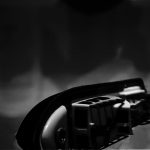
366
[Felice Hapetzeder]
Categories: [Animation & Video] -
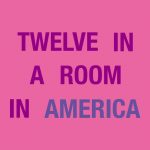
A Small Fee
[David Krippendorff]
Categories: [Animation & Video] -
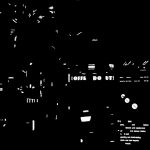
A Written Perspective
[Benjamin Forster]
Categories: [Animation & Video] -

Apotheosis of Glasgow High-rises
[Myriam Thyes]
Categories: [Animation & Video] -

Arcadia
[Rick Fisher] [Don Rice]
Categories: [Animation & Video] -

City.Flow()
[Wobbe F. Koning]
Categories: [Animation & Video] -
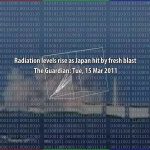
Composition Fukushima
[Kenji Kojima]
Categories: [Animation & Video] -

Deep Horizon
[UBERMORGEN]
Categories: [Animation & Video] -
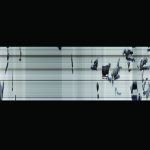
Digits
[Joanna Bonder]
Categories: [Animation & Video] -
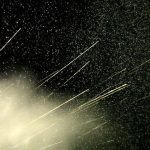
Don't Know Where To Point
[Bryne Rasmussen-Smith]
Categories: [Animation & Video] -

Fashion To Die For
[Lynn Estomin]
Categories: [Animation & Video] -

Filament
[Grant Petrey]
Categories: [Animation & Video] -
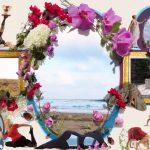
Grotesques
[Ellen Wetmore]
Categories: [Animation & Video] -
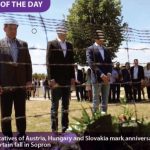
Horribile Pictu 1
[Szacsva y Pal]
Categories: [Animation & Video] -
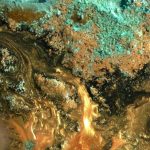
Mudland #1
[Ulu Braun]
Categories: [Animation & Video] -
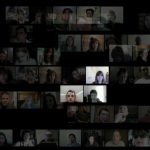
My Meds, from the series Testament
[Natalie Bookchin]
Categories: [Animation & Video] -
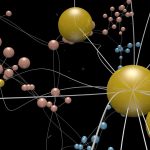
necrolog of robin williams or the suicid...
[Alexander Repp]
Categories: [Animation & Video] -
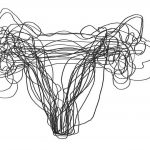
Not To Scale At All
[Kaisu Koski]
Categories: [Animation & Video] -
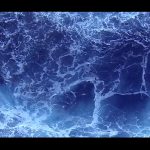
On China Sea
[Thomas Porett]
Categories: [Animation & Video] -

OU TOPOS
[Charlotte Eifler]
Categories: [Animation & Video] -
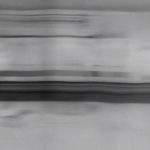
Particle Daydreams
[Joon Y. Sung] [Neal Williams]
Categories: [Animation & Video] -

Printed Clothes DIY (4 my catcaller)
[Talia Link]
Categories: [Animation & Video] -
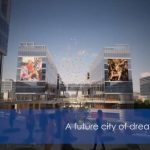
Raw Quinoa
[Chonga Lee]
Categories: [Animation & Video] -
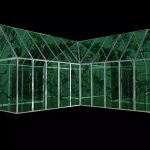
Shatter/Flood/Mud/Houses
[Nina Yankowitz]
Categories: [Animation & Video] -

Simulacrum
[Jason Bernagozzi]
Categories: [Animation & Video] -
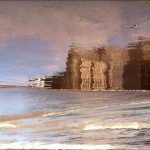
Slip Away
[Mikey Peterson]
Categories: [Animation & Video] -
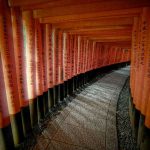
Soft Pong Inari
[Michael Lyons]
Categories: [Animation & Video] -
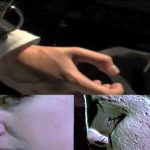
Surveillance Siddhi
[Ellen Pearlman]
Categories: [Animation & Video] -

The Dust Machine Variation
[Damon Mohl]
Categories: [Animation & Video] -

Water
[Harrison Banfield] [Jack Rees]
Categories: [Animation & Video]




